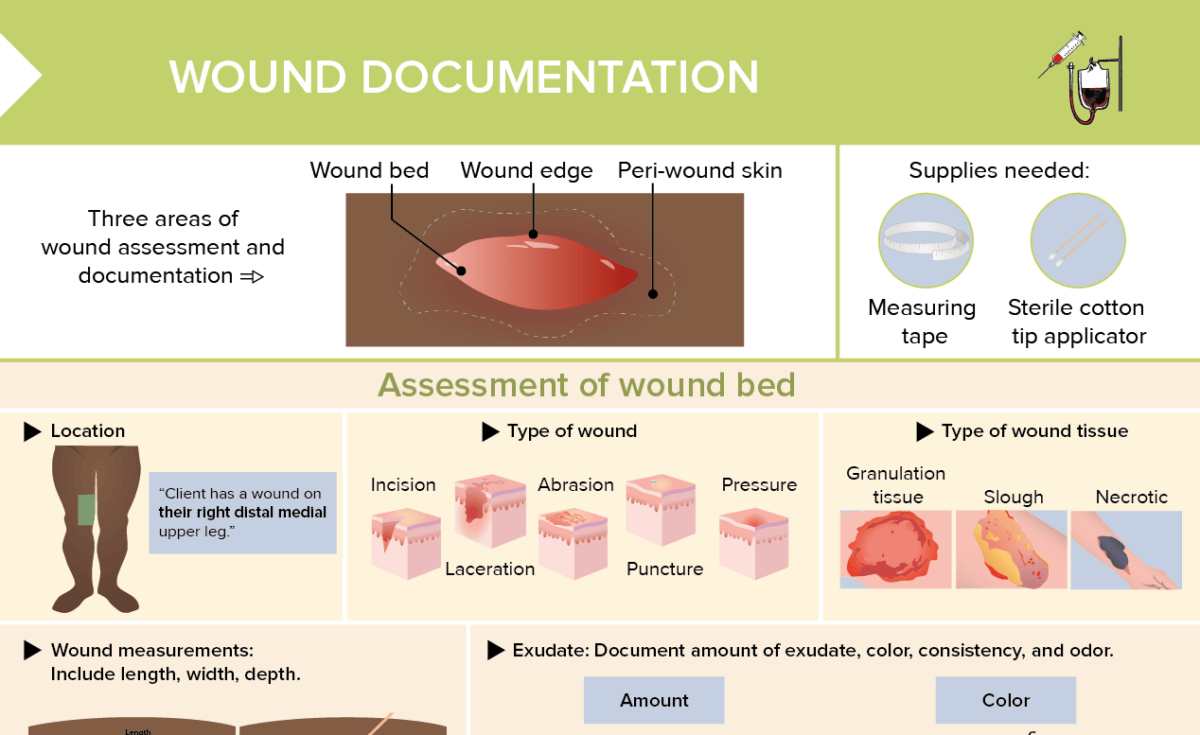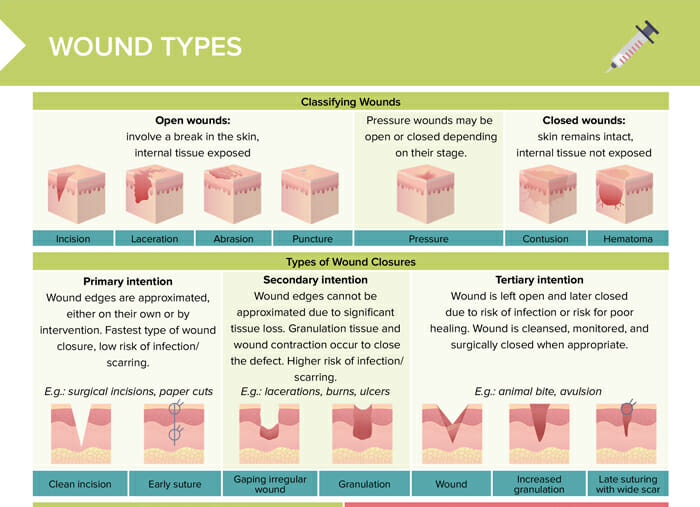Wound classification: What are the types of wounds?
- Open wounds: involve a break in the skin, internal tissue exposed
- Incision
- Laceration
- Abrasion
- Puncture
- Closed wounds: skin intact, internal tissue not exposed
- Contusion
- Hematoma
- Pressure wounds may be open or closed depending on their stage.
Types of wound closures and healing
Primary intention
Wound edges are approximated, either on their own or by intervention. This is the fastest type of wound closure, carrying only a low risk of infection/scarring. Examples are surgical incisions and paper cuts.
Secondary intention
Wound edges cannot be approximated due to significant tissue loss. Granulation tissue and wound contraction occur to close the defect. A higher risk of infection and scarring is present. Examples are lacerations, burns, and ulcers.
Tertiary intention
The wound is left open and later closed to reduce the risk of infection and risk for poor healing. The wound is cleansed, monitored, and surgically closed when appropriate. Examples are animal bites and avulsions.
Methods for wound closure
Options include sutures (stitches), staples, adhesive strips (Steri-Strips), tissue adhesives (skin glue), and adhesive closures (zip-type).
Risk factors for delayed healing
- Infections
- Poor tissue perfusion
- Diabetes
- Malnutrition
- Obesity
- Genetic conditions
- Medications:
- Corticosteroids
- Anticoagulants
- Immunosuppressants
- Chemotherapy
- NSAIDs
Nursing care priorities for wound care
- Assess and document wound appearance and care.
- Monitor for signs of healing and infection.
- Treat for pain prophylactically prior to procedures.
- Perform wound cleaning/irrigation as prescribed.
- Obtain wound culture if ordered.
- Select prescribed dressing.
- Perform dressing changes.
- Educate client on wound care.
Client education in wound care
- Clients need to be instructed how to clean wounds and perform dressing changes.
- Provide anticipatory guidance: Inform that soreness, tingling, itching can be normal.
- Inform client about scheduled removals of stitches, staples, steri-strips, and follow-ups.
- Educate client on signs of infection and when to call provider.
What are acute vs chronic wounds?
Acute wounds follow the normal stages of wound healing and are expected to heal within a predictable timeframe. Chronic wounds take a longer period of healing/care, often due to underlying conditions like diabetes or poor circulation.
How to determine the type of wound dressing to use
The choice depends on the wound type, size, location, and stage of healing, as well as the amount and type of exudate. Some dressings are designed to maintain a moist environment, some to absorb exudate, and others to protect from external contaminants.

